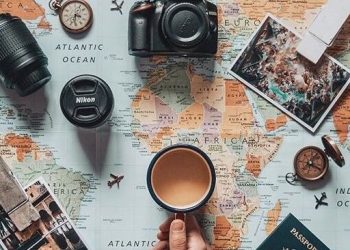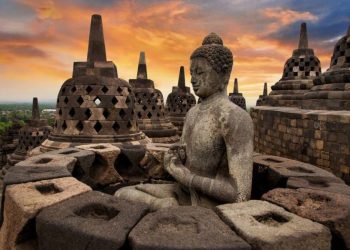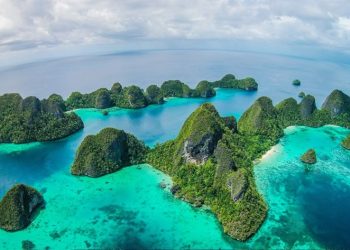Jakarta, Indonesia Sentinel — The Mentawai people, an indigenous tribe residing in the Mentawai Islands off the western coast of Sumatra, are among Indonesia’s oldest communities. Renowned for their deeply rooted traditions, the Mentawai tribe’s traditional tattoos stand out as a powerful cultural symbol and one of the oldest forms of body art in the world.
Tattooing, or titi, has been a cornerstone of Mentawai culture for thousands of years, reportedly dating as far back as 1,500 BCE. Passed down through generations, this ancestral practice is believed to make Mentawai tattoos the oldest known tattoos in existence.
The Meaning Behind Mentawai Tattoo Motifs
Mentawai tattoos are far more than body art; they hold deep ritual significance and reflect an individual’s role in society. Tattooing marks key milestones, such as the transition into adolescence, when both boys and girls undergo initiation ceremonies symbolizing maturity.
The motifs vary based on gender, profession, and societal standing. For men, tattoos typically feature black curved lines across the shoulders, symbolizing arrows or prey animals such as wild boars, deer, monkeys, birds, or crocodiles—acknowledging their skills as hunters.
Women, meanwhile, bear tattoos depicting subba, or fish traps, signifying their roles in catching fish from rivers—a vital contribution to the community’s livelihood.
For the sikerei, the Mentawai shamans and healers, tattoos hold profound spiritual meaning. The “Sibalu-balu” motif, star-shaped tattoos applied near the upper arms, symbolizes fertility and health. These markings are believed to protect the tribe from illness and malevolent spirits, emphasizing the sikerei’s role as guardians of both physical and spiritual well-being.
A Traditional and Painstaking Process
Unlike modern tattooing methods, Mentawai tattoos are crafted using time-honored techniques. Before the process begins, a sipatiti—the tattoo artist—conducts a ceremonial ritual alongside the sikerei, or tribal shaman. The sipatiti then sketches rough outlines on the skin to prepare the canvas.
Mentawai Tribe Tooth Sharpening Tradition as a Symbol of Beauty, Culture, and Sacrifice
The tattooing itself involves wooden needles and a hammer-like stick, which are used to gently tap natural ink into the skin. The ink is derived from organic materials, a blend of banana leaves and charcoal from coconut shells, free of any modern chemicals.
Mentawai traditional tattoos are applied across the entire body, from the legs and fingers to the chest, neck, and even the cheeks. Due to the traditional methods used, the process often results in visible bleeding. The tattooing can take up to two days to complete, and recovery usually involves a period of illness, with many experiencing fever after being inked.
A Living Legacy of Identity
Mentawai tattoos remain an enduring symbol of cultural pride and identity. Beyond their aesthetic beauty, they narrate stories of bravery, skill, and connection to nature. Each tattoo carries personal and communal significance, reflecting the values and roles that have sustained the Mentawai people for millennia.
The Mentawai tribe’s traditional tattoos serve as a poignant reminder of humanity’s timeless traditions and the profound connections between art, identity, and cultural survival.
(Raidi/Agung)

























